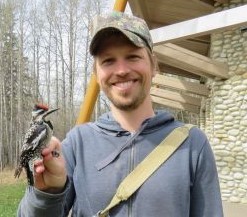Collection
Special Issue: Morphological responses to climate change
- Submission status
- Open
- Open for submission from
- 01 May 2024
- Submission deadline
- 30 November 2024
Anthropogenic climate change is having profound ecological and evolutionary impacts on organismal biology. Organisms are adapting, both plastically and through selection, to increased temperatures by changing size and shape to better aid thermoregulation, access resources, or withstand harsher environments.
For this special issue we invite contributions that identify morphological changes across different organismal groups, explore the mechanisms underlying the changes, and/or investigate their consequences for species’ physiology, survival, and reproduction. Studies that examine the biotic and abiotic factors that promote or mitigate such morphological responses are also encouraged, as they play an important role in identifying the characteristics of organisms that make them more likely to evolve morphologically in response to climate change. The special issue aims to help to develop a more coherent understanding of this likely significant consequence of climate change.
We seek Research Articles, Perspectives, and Review Articles for this special issue. We especially encourage research groups from underrepresented regions to submit their work in any of the proposed areas. Students & Early Career Researchers are also encouraged to submit their research.
This special issue will address United Nations Sustainable Development Goals 13: Climate Action, 14: Life Below Water, and 15: Life on Land.
Keep up with the latest Evolutionary Ecology content by signing up for Journal Alerts today!
Editors
-
Matthew R. E. Symonds (PhD)
An evolutionary ecologist whose work focusses on explaining the evolution of diversity, in particular, identifying the ecological and environmental factors that shape species differences in behaviour, morphology and physiology, Prof. Symonds has employed comparative approaches to understand the evolution of life histories, chemical and visual signals, and anti-predator behaviour. His most recent focus has been on bird morphology, and how birds evolve in response to different climate regimes and disturbance. Prof. Symonds is also Editor-in-Chief of Evolutionary Ecology.
-
Brian C. Weeks (PhD)
An evolutionary ecologist trying to understand species responses to global change, and the role of biodiversity in mitigating these responses, Dr. Weeks integrates field biology and museum specimen-based work. His recent work has focused on the mechanisms and consequences of morphological change within the context of recent warming in North American migratory birds, and macroecological gradients in skeletal morphology across passerines. Dr. Weeks is also an Associate Editor of Evolutionary Ecology.
-
Sara M. K. Ryding (BSc Hons)
An evolutionary ecologist with a focus on how birds respond to climate change, Ms. Ryding's work includes morphological responses to climate change, with a particular interest in how appendages involved in thermoregulation are impacted by climatic warming. More recently, her work has focused on how climate change influences population dynamics, with particular emphasis on breeding success in birds.




